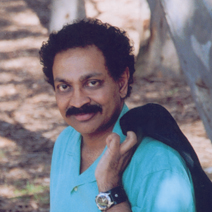Research Interests
Dr. Ramachandran's major areas of research are: cognitive neuroscience, behavioral neurology - the study of cognitive and perceptual deficits in human neurological patients, neural plasticity and "phantom limbs", stroke rehabilitation, human visual perception/cognition, and visual psychophysics.
Selected Publications
- Ramachandran, VS (2011). The Tell-Tale Brain: A Neuroscientist's Quest for What Makes Us Human. New York: W. W. Norton & Company.
- Ramachandran, VS (2003). The Emerging Mind. BBC/Profile Books, London.
- Ramachandran, VS, Altschuler, EL (2009). The use of visual feedback, in particular mirror visual feedback, in restoring brain function. Brain, 132 (7), 1693-1710.
- Ramachandran, VS (2005). Plasticity and functional recovery in neurology. Clinical medicine, 5(4), 368-73.
- Armel, KC & Ramachandran, VS (2003), Projecting sensations to external objects: evidence from skin conductance response, Proceedings of the Royal Society, B, Biological Sciences, 270 (1523), 1499-506
- Ramachandran, VS & Hubbard, EM (2001). Psychophysical investigations in to the neural basis of synaesthesia. Proceedings of the Royal Society, 268, 979-983.
- Ramachandran, VS & Hubbard, EM (2001). Synaesthesia--a window into perception, thought and language. Journal of Consciousness Studies, 8, 3-34.
- Ramachandran, VS & Hirstein, W (1998). The perception of phantom limbs: The D. O. Hebb lecture. Brain, 121, 1603-1630.
- Ramachandran, VS, Altschuler, EL, & Hillyer, S (1997). Mirror agnosia. Proceedings of the Royal Society of London, 264, 645-647.
- Hirstein, W, & Ramachandran, VS (1997). Capgras syndrome: a novel probe for understanding the neural representation and familiarity of persons. Proceedings of the Royal Society of London, 264, 437-444.
- Ramachandran, VS & Gregory, RL (1991). Perceptual filling in of artificially induced scotomas in human vision. Nature, 350, 699-702.
- Ramachandran, VS (1990). Perceiving shape from shading. The perceptual world: Readings from Scientific American magazine. I. Rock. New York, NY, US, W. H. Freeman & Co, Publishers: 127-138.
- Ramachandran, VS (1987). Interaction between colour and motion in human vision. Nature, 328, 645-647.
- Ramachandran, VS & Anstis, SM (1986). The perception of apparent motion. Scientific American, 254, 102-109.
Updated April 2018

